Barend van Orley (circa 1488–1541) stands as one of the most versatile and influential artists of the Netherlandish Renaissance. Active in Brussels, a vibrant artistic and political hub, Van Orley excelled as a painter of altarpieces and portraits, a prolific designer of tapestries, and an innovative creator of stained-glass windows. His career coincided with a period of profound artistic transformation in Northern Europe, as the established traditions of Early Netherlandish painting began to absorb and reinterpret the ideals of the Italian Renaissance. Van Orley was at the forefront of this movement, skillfully blending Northern realism with Italianate monumentality and grace, thereby forging a distinctive style that left an indelible mark on the art of his time and influenced subsequent generations.
Early Life and Artistic Formation in Brussels
Born into an artistic family in Brussels around 1488, Barend van Orley's lineage provided a natural pathway into the world of art. His father, Valentin van Orley (c. 1466 – 1532), was himself a painter and tapestry designer, originally from a noble family in Luxembourg. However, Valentin's status as an illegitimate son meant he did not inherit noble titles, a circumstance that likely shaped the family's social standing and professional ambitions. It is highly probable that Barend received his initial artistic training in his father's workshop, a common practice in that era, where he would have learned the foundational skills of drawing, painting, and perhaps the rudiments of tapestry design.
Brussels, during Van Orley's formative years, was a thriving center for the production of luxury goods, especially tapestries, which were highly prized by courts across Europe. The city's artistic environment was rich and competitive, still echoing with the legacy of earlier Netherlandish masters like Rogier van der Weyden, who had been the official city painter a few generations prior. This local tradition, characterized by meticulous detail, rich color, and a profound engagement with religious and secular themes, would have formed the bedrock of Van Orley's early artistic vocabulary.
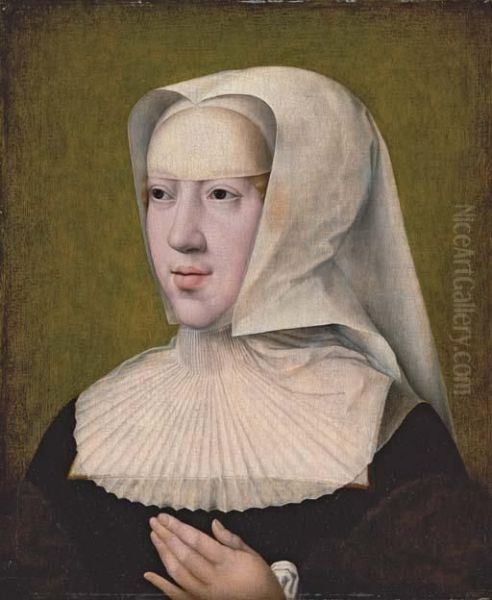
While details of his early independent career are somewhat scarce, by 1515, Van Orley was already receiving significant commissions. One notable early work from this period was a commission from Margaret of Austria, the Regent of the Habsburg Netherlands, to paint portraits of Philip the Handsome's children. This early connection to the court would prove to be a defining feature of his career.
The Call of the Court: Service to the Habsburgs
Van Orley's talent and ambition quickly brought him to the attention of the highest echelons of society. In 1518, he was appointed as the official court painter to Margaret of Austria, a position of considerable prestige and influence. Margaret was a discerning patron of the arts, and her court in Mechelen was a sophisticated cultural center. This appointment not only provided Van Orley with a steady stream of commissions but also placed him in direct contact with international artistic trends and influential figures.
His role as court painter involved a variety of tasks, from creating portraits of the regent and her family to designing large-scale decorative projects. After Margaret's death in 1530, Van Orley continued to serve the Habsburgs under her successor, Mary of Hungary, who also became Regent of the Netherlands. His association with the Habsburg court extended to Emperor Charles V, one of the most powerful rulers in Europe. For Charles V and his circle, Van Orley designed magnificent tapestry series, which were not only works of art but also powerful statements of imperial grandeur and authority.
This sustained patronage from the Habsburgs was crucial to Van Orley's success. It provided him with the resources to run a large and productive workshop, and it ensured that his work was seen and admired by an elite international audience. His portraits of figures like Charles V and Margaret of Austria helped to shape their public image, while his religious and mythological works adorned their palaces and chapels.
The Italianate Influence: Raphael's Shadow in the North
A defining characteristic of Barend van Orley's art is its engagement with the Italian Renaissance. While there is no definitive documentary evidence that Van Orley ever traveled to Italy, his work demonstrates a profound understanding and assimilation of Italian artistic principles, particularly those of Raphael Sanzio da Urbino (1483-1520). This "Romanism," as it came to be known in the North, involved the adoption of classical motifs, more dynamic and monumental figure compositions, and a greater emphasis on anatomical accuracy and idealized beauty.
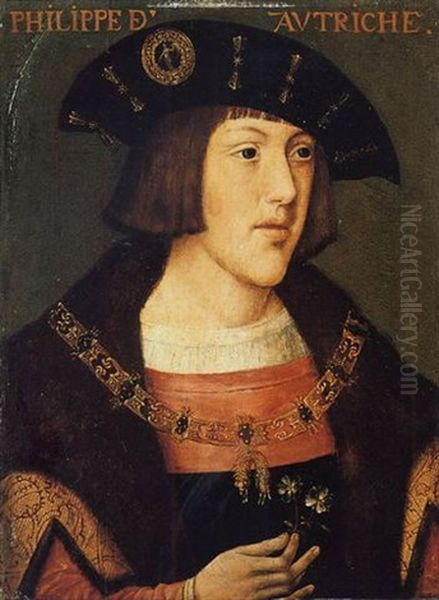
It is believed that Van Orley became acquainted with Raphael's work primarily through prints and, most importantly, through Raphael's tapestry cartoons for the Acts of the Apostles series. These cartoons were sent to Brussels around 1516 to be woven in the renowned workshop of Pieter van Aelst the Elder. As a leading artist in Brussels, Van Orley would have had ample opportunity to study these monumental designs firsthand. The impact of Raphael's compositions, with their heroic figures, dramatic narratives, and harmonious arrangements, is clearly discernible in Van Orley's subsequent work.
He did not simply copy Italian models but rather integrated them into his existing Netherlandish framework. He retained the Northern love for detail, rich textures, and expressive characterization, but infused his compositions with a new sense of grandeur and classical balance. This synthesis is evident in the more muscular and idealized rendering of his figures, the dynamic poses, and the often complex architectural settings that recall Italian Renaissance aesthetics. Other Italian masters whose influence can be detected, perhaps indirectly through Raphael or prints, include Leonardo da Vinci for his sfumato and compositional innovations, and Michelangelo for the power of his figures.
Master of Multiple Mediums: Painting
As a painter, Barend van Orley produced a significant body of work, encompassing both religious subjects and portraiture. His early paintings show the influence of earlier Netherlandish masters, but his style evolved rapidly as he absorbed Italianate ideas.
His religious paintings often depict traditional themes but with a new dynamism and emotional intensity. Works like The Last Judgment and the Job Altarpiece (also known as the Altarpiece of the Virtue of Patience, commissioned by Margaret of Austria) showcase his ability to manage complex multi-figure compositions, imbuing them with dramatic force and rich symbolism. The figures in these works are often muscular and expressive, placed within elaborate architectural or landscape settings. The Holy Family is another theme he revisited, often imbuing it with a tender humanism alongside its divine significance.
Van Orley's portraiture was highly sought after. He painted members of the Habsburg court and other prominent individuals, capturing not only their likeness but also their status and personality. His portraits, such as those of Margaret of Austria or the physician Georges de Zelle, are characterized by their clarity, psychological insight, and meticulous rendering of costume and accessories. He often placed his sitters in three-quarter view, a convention popularized by artists like Jan van Eyck and Hans Memling, but his figures possess a greater sense of volume and presence, reflecting the Italian influence.
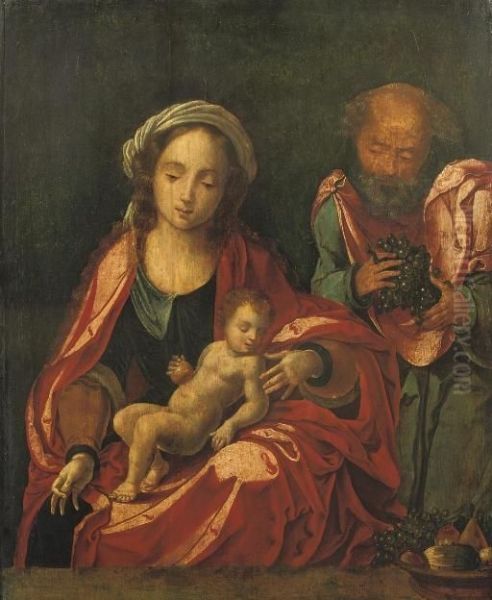
His palette was typically rich and varied, and he demonstrated a keen ability to render different textures, from shimmering silks and velvets to polished armor and human flesh. While he embraced the monumentality of the Italian style, he never fully abandoned the Northern penchant for detailed realism.
Master of Multiple Mediums: Tapestry Design
Perhaps Van Orley's most significant and far-reaching contributions were in the field of tapestry design. Brussels was the leading center for tapestry production in Europe during the 16th century, and Van Orley played a crucial role in elevating the artistic quality and ambition of these woven masterpieces. He ran a large and highly productive workshop that specialized in creating cartoons – full-scale painted designs – for tapestry weavers.
His tapestry designs were revolutionary, moving away from the more static, decorative style of earlier Gothic tapestries towards a more pictorial and narrative approach, heavily influenced by Renaissance painting. He introduced monumental figures, dynamic compositions, and a sense of spatial depth previously unseen in this medium.
Among his most famous tapestry series are the Hunts of Maximilian (also known as Les Belles Chasses de Guise), a set of twelve tapestries depicting the hunting activities of the court throughout the months of the year, set against meticulously rendered landscapes around Brussels. These tapestries are celebrated for their lively scenes, rich detail, and masterful composition. Another significant series is the Battle of Pavia, which commemorates Emperor Charles V's decisive victory over the French. These designs are filled with dramatic action and a multitude of figures, showcasing Van Orley's skill in organizing complex narratives on a grand scale. He also designed religious tapestries, such as a Last Supper series.
These tapestries were enormously expensive and highly prized, serving as portable symbols of wealth, power, and cultural sophistication. Van Orley's designs were woven by the finest workshops in Brussels, including that of Pieter van Aelst, and were exported to courts and noble houses throughout Europe. His innovations in tapestry design had a lasting impact, influencing the style of Brussels tapestries for decades to come.
Master of Multiple Mediums: Stained Glass
In addition to painting and tapestry design, Barend van Orley was also a highly accomplished designer of stained-glass windows. This medium, like tapestry, was an important form of monumental decoration, particularly for ecclesiastical buildings. Van Orley brought the same Renaissance-inspired aesthetic to his stained-glass designs, creating windows that were essentially translucent paintings.
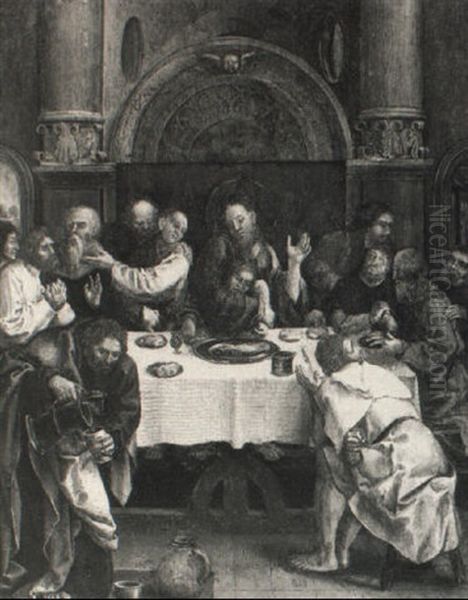
He designed significant stained-glass windows for major churches, most notably for the Cathedral of St. Michael and St. Gudula in Brussels. His designs for the transept windows, depicting members of the Habsburg family kneeling before sacred figures, are particularly renowned. These windows are characterized by their rich colors, monumental figures, and sophisticated compositions, which integrate seamlessly with the Gothic architecture of the cathedral while introducing a distinctly Renaissance sensibility.
His stained-glass designs, like his tapestry cartoons, would have been executed by specialized craftsmen, but Van Orley's artistic vision guided the final product. He understood how to use the interplay of light and colored glass to create dazzling and spiritually uplifting effects. His work in this medium further demonstrates his versatility and his ability to adapt his style to different artistic challenges. Other artists like Albrecht Dürer in Germany were also exploring monumental printmaking and design, and the cross-pollination of ideas across mediums was characteristic of the era.
The Van Orley Workshop: Collaboration and Production
To meet the demand for his work across these various mediums, Barend van Orley operated a large and well-organized workshop. This was common practice for successful artists of the period, but Van Orley's studio appears to have been particularly extensive, reflecting his numerous high-profile commissions, especially in tapestry design.
The workshop would have employed numerous assistants, apprentices, and specialized craftsmen. While Van Orley himself would have been responsible for the primary designs and perhaps the most important painted passages, much of the execution, particularly for large-scale projects like tapestry cartoons or extensive altarpieces, would have been carried out by his workshop members under his supervision. This collaborative approach allowed for a high volume of production without sacrificing overall quality control.
He is known to have collaborated with other prominent figures in the Brussels art world. For instance, he worked closely with tapestry weavers like Pieter van Aelst the Elder. His relationship with other painters and designers was also important. The artistic community in Brussels was relatively close-knit, and artists often influenced and learned from one another. Figures like Jan Gossaert (Mabuse), another key Romanist active in the Netherlands, and Quentin Matsys in Antwerp, were part of this broader artistic landscape.
Key Students and Artistic Lineage
Barend van Orley was not only a prolific artist but also an influential teacher. Several artists who went on to achieve significant reputations trained in his workshop, ensuring the continuation and dissemination of his artistic ideas.
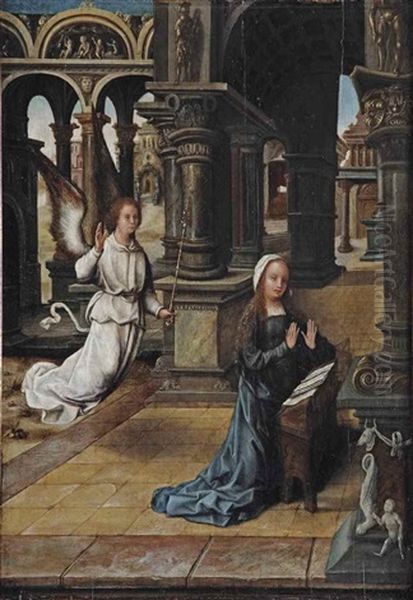
Among his most notable students were Michiel Coxcie (1499–1592) and Pieter Coecke van Aelst (1502–1550) (not to be confused with the tapestry weaver Pieter van Aelst the Elder). Michiel Coxcie, often dubbed the "Flemish Raphael," spent many years in Italy and became one of the leading exponents of Romanism in the Netherlands. He inherited Van Orley's workshop and continued to produce paintings and designs for tapestries and stained glass in a style that further developed the Italianate tendencies of his master.
Pieter Coecke van Aelst was also a versatile artist, active as a painter, sculptor, architect, and designer of tapestries and stained glass. He, too, traveled to Italy and later to Constantinople, and his work reflects a sophisticated understanding of Renaissance principles. He became court painter to Charles V and was a highly influential figure in his own right, also running a large workshop and publishing architectural treatises by Vitruvius and Serlio in translation, which further spread Renaissance ideas.
The artistic lineage extending from Van Orley through students like Coxcie and Coecke van Aelst played a crucial role in shaping the course of Netherlandish art in the mid-16th century. His sons, including Eefrard van Orley, also became painters, continuing the family's artistic tradition. The influence of his style can also be seen in the work of contemporaries and slightly later artists who adapted elements of his approach, even if they did not directly study with him.
Notable Works: A Closer Look
Several of Barend van Orley's works stand out as particularly representative of his style and significance.
The Altarpiece of the Virtue of Patience (also known as the Job Altarpiece, Royal Museums of Fine Arts of Belgium, Brussels), created between 1521 and 1530 for Margaret of Austria, is a monumental triptych. The central panel depicts the trials of Job, while the wings show the story of Lazarus and the Rich Man. The figures are muscular and expressive, reminiscent of Michelangelo, and the compositions are dynamic and filled with narrative detail. It is a prime example of his mature style, blending Northern narrative traditions with Italianate forms.
The Hunts of Maximilian tapestries (Louvre Museum, Paris, and other collections), designed in the 1530s, are a triumph of tapestry art. Each of the twelve panels depicts a different month's hunting activities, set in meticulously detailed landscapes around Brussels. The vibrancy of the scenes, the naturalism of the animals and figures, and the sheer scale of the undertaking make this series one of the high points of Renaissance tapestry.
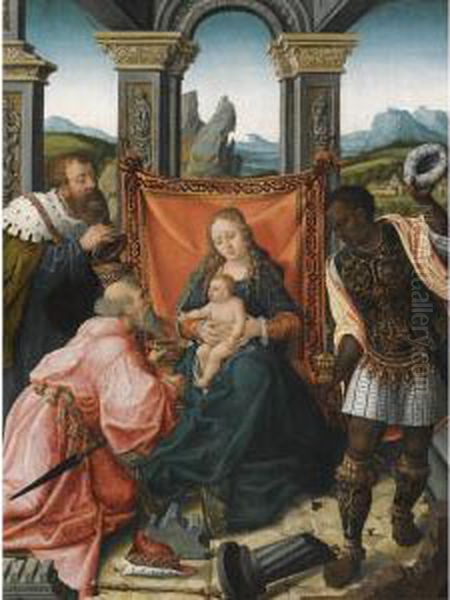
His stained-glass windows in the Cathedral of St. Michael and St. Gudula, Brussels, particularly those in the north and south transepts depicting Charles V and his family, and Louis II of Hungary and his wife Mary of Hungary (Charles V's sister) respectively, are masterpieces of the medium. Designed in the late 1530s, these windows showcase monumental figures rendered with a painterly quality, rich colors, and elaborate Renaissance architectural frames.
The Portrait of Margaret of Austria (various versions exist) captures the regent's dignified and intelligent presence. These portraits are not merely likenesses but carefully constructed images of power and piety, reflecting Van Orley's skill in conveying character and status. Similarly, his Portrait of Charles V helped to define the emperor's image for his contemporaries.
A work like The Virgin and Child with St. John the Baptist (c. 1515-1520) shows his engagement with themes popularized by Italian artists like Raphael and Leonardo da Vinci, adapting them with a Northern sensibility. The influence of German artists like Lucas Cranach the Elder can also be seen in certain works, for example, in some depictions of the Rest on the Flight into Egypt, indicating Van Orley's awareness of broader Northern European artistic developments.
Patronage and Networks
Van Orley's success was significantly bolstered by his extensive network of patrons. His primary patrons were the Habsburg regents, Margaret of Austria and Mary of Hungary, and Emperor Charles V. These commissions provided him with unparalleled opportunities and exposure.
Beyond the immediate Habsburg circle, he also worked for other influential figures. Henry III of Nassau-Breda, an important advisor to Charles V, commissioned Van Orley to design a series of eight tapestries celebrating the glories of his ancestors for his palace in Breda. These tapestries, unfortunately, were later destroyed by fire in 1760.
Cardinal Willem van Enckevoirt, an influential churchman and patron of the arts, was another supporter. It is said that Van Enckevoirt recommended that Michiel Coxcie study with Van Orley and may have facilitated commissions for stained glass. Such connections within the church and the aristocracy were vital for an artist's career in this period.
The guilds also played a role, though court artists often had a somewhat different relationship with them. Van Orley was a member of the Brussels painters' guild, but his court appointments likely gave him a degree of independence. His large workshop and the international demand for his tapestry designs also connected him to a broader network of weavers, merchants, and agents.
Anecdotes and Historical Curiosities
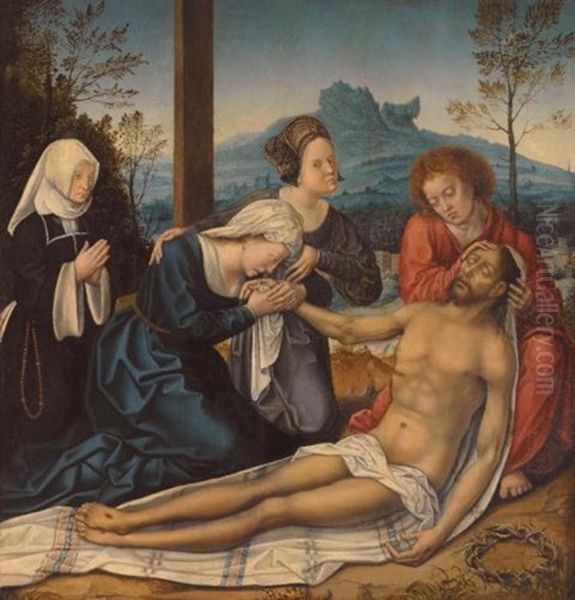
Several interesting details and some unresolved questions surround Barend van Orley's life. His father's illegitimate noble origins, as mentioned, provide a curious backdrop to his own rise to prominence through artistic merit.
The question of whether Van Orley ever traveled to Italy remains a subject of scholarly debate. While the stylistic evidence of Italian influence, particularly that of Raphael, is undeniable, no documents confirm such a journey. It is possible he absorbed these influences entirely through prints, drawings, and the Raphael cartoons present in Brussels. If he did travel, it would likely have been between 1515 and 1520, but this remains speculative.
Van Orley's workshop was evidently a major enterprise. The sheer volume of tapestry designs attributed to him suggests a highly efficient system of production. While he was the creative force, the day-to-day execution of many cartoons would have fallen to his assistants. This was not unusual; masters like Peter Paul Rubens would operate similarly in the following century.
Some of his works have undergone significant restoration or even re-weaving, as in the case of some of the Hunts of Maximilian tapestries, which were re-woven in the 19th century at the Gobelins manufactory, attesting to their enduring appeal and importance.
He had a large family, with nine children. Four of his sons – Jan, Hieronymus, Gommaar (or Gomar), and Eefrard (or Everard) – are recorded as having become painters, though their individual careers are less well-documented than their father's. This continuation of the artistic profession within the family was a common feature of the era.
Later Years and Legacy
Barend van Orley remained active and influential until his death in Brussels on January 6, 1541. He was buried in the Church of St. Géry. His artistic legacy was substantial and multifaceted.
He was a key figure in the Romanist movement in the Netherlands, successfully adapting and popularizing Italian Renaissance aesthetics for a Northern audience. His synthesis of Italian monumentality with Netherlandish detail and realism created a style that was both innovative and accessible.
In tapestry design, his impact was transformative. He essentially created the model for Renaissance tapestry, moving it from a primarily decorative art form to one capable of complex pictorial narratives rivaling monumental painting. His designs set the standard for Brussels tapestry production for much of the 16th century.
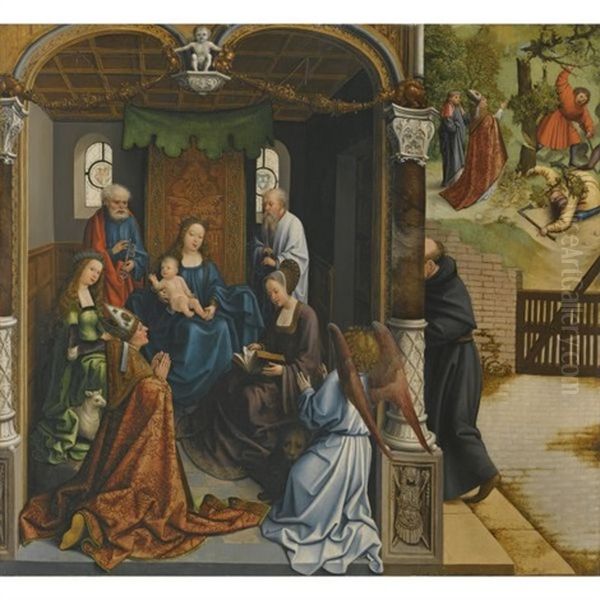
Through his influential students, particularly Michiel Coxcie and Pieter Coecke van Aelst, his artistic ideas were further developed and disseminated, shaping the next generation of Netherlandish artists. Even artists who did not directly study with him, such as Lambert Lombard or Frans Floris, were part of this broader Romanist trend that Van Orley helped to pioneer.
His work was admired and collected throughout Europe, and his influence extended beyond his immediate circle. While later artistic movements, such as the more overtly national style of Pieter Bruegel the Elder or the Baroque dynamism of Rubens, would take Netherlandish art in new directions, Van Orley's contribution as a bridge between the late Gothic tradition and the full embrace of Renaissance ideals remains a cornerstone of art history in the Low Countries.
Conclusion
Barend van Orley was a remarkably versatile and productive artist who played a pivotal role in the artistic landscape of the 16th-century Netherlands. As a painter, tapestry designer, and stained-glass artist, he skillfully navigated the complex cultural currents of his time, forging a powerful synthesis of Northern tradition and Italian Renaissance innovation. His service to the Habsburg court, his prolific workshop, and his influential students all contributed to his significant impact on the art of his era. From the intimate detail of his portraits to the grand scale of his tapestry series, Van Orley's work consistently demonstrates a masterful command of his craft and a sophisticated artistic vision. He remains a key figure for understanding the rich and dynamic period of the Netherlandish Renaissance, an artist whose creations continue to impress with their beauty, complexity, and historical significance.